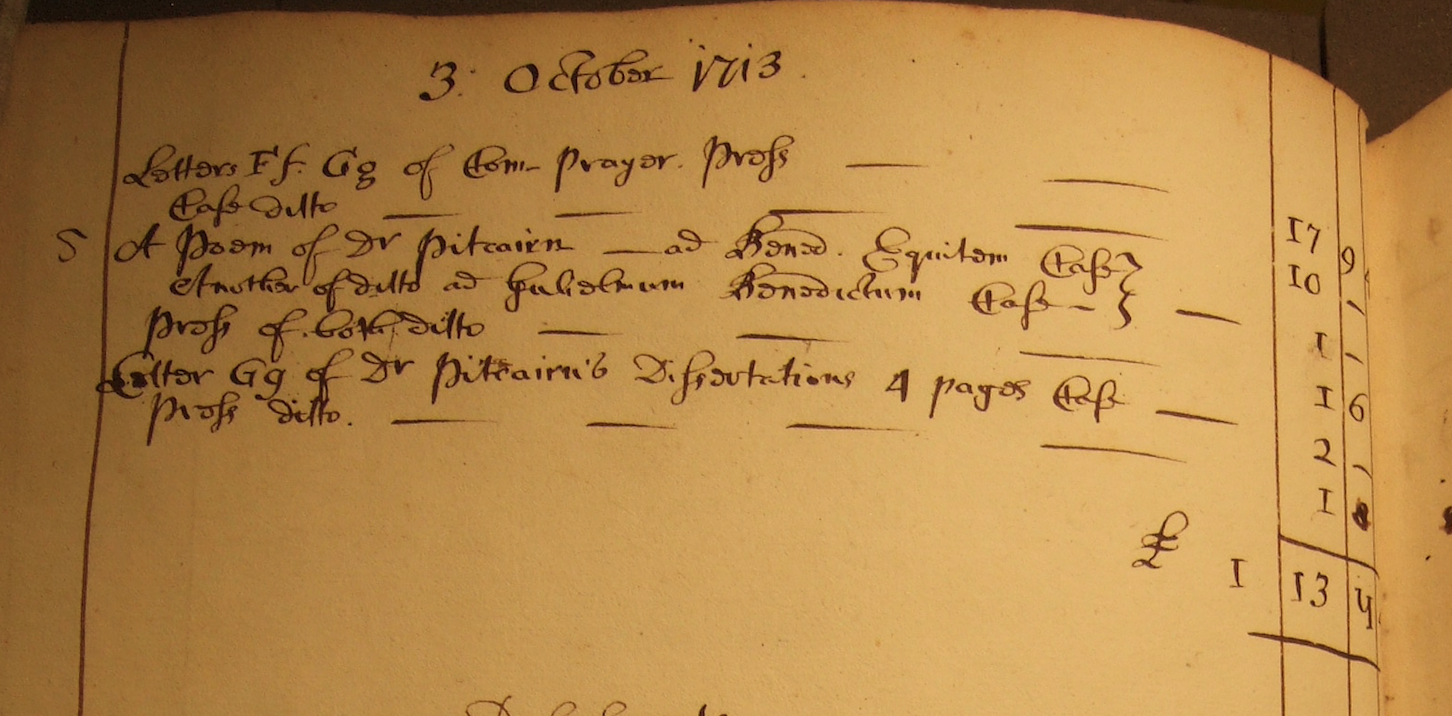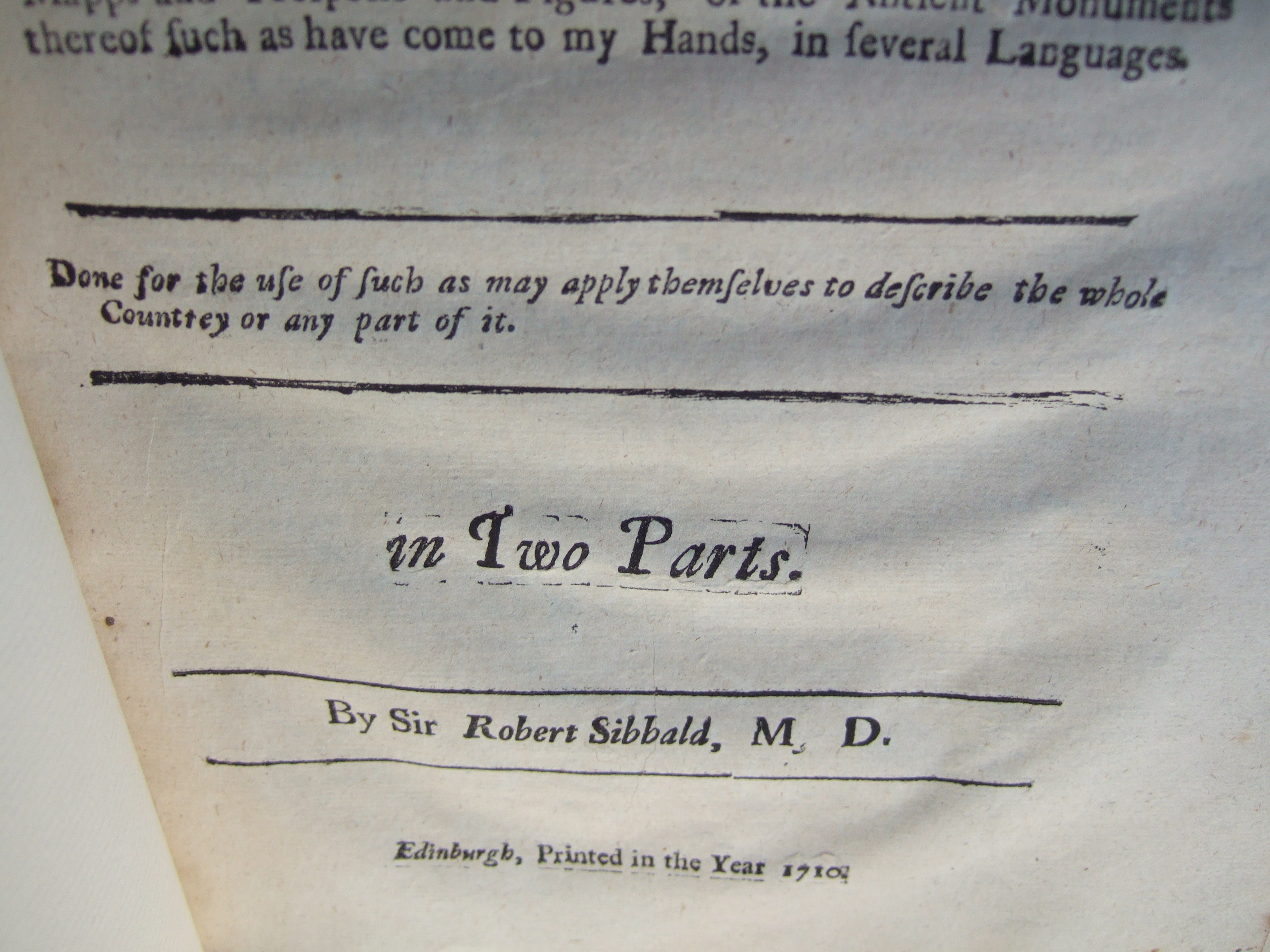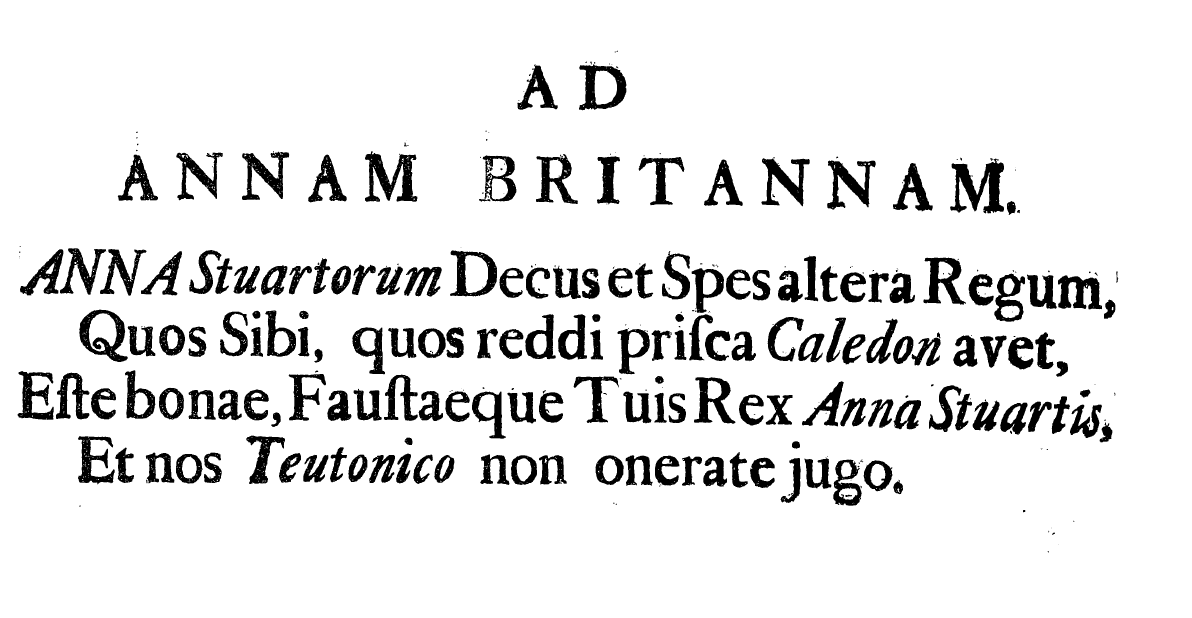A couple of years ago I was reading the account book of Robert Freebairn’s print shop in Edinburgh (because what could be more thrilling?) and came across some unusual entries. In amongst the regular business of the shop – “for a new barr-shaft to the press”, “for ten fathom of cords for hanging books”, “for carrying paper”, “for Drink & Bread this Week to encourage [the apprentices] to work” – were several entries relating to the physician, heterodox thinker, and poet Archibald Pitcairne (1652-1713).
On 28 March 1713, Thomas Ruddiman – who moonlighted as Freebairn’s clerk when he wasn’t busy being librarian to the Faculty of Advocates – noted “Poem for Dr Pitcairn” and immediately below it, “press thrice wrought”. On 16 May he recorded a “Poem of Dr Pitcairn’s on my Lord Drummond’s Son 4 times wrought” and on 3 October two more “Poem[s] of Dr Pitcairn”. Pitcairne is known for his habit of publishing poems as single broadside sheets, but I was intrigued by this suggestion that they had gone through the press multiple times (a suggestion confirmed by the relatively high costs of these impressions, 1s. 6d. for the printing of the 28 March poem and 2s. for that of 16 May, compared, say, to the 3s. weekly wage of Freebairn’s journeymen). Why was Freebairn taking so much trouble over these jobs?

The answer may lie with the state of Edinburgh printing at the beginning of the eighteenth century. That state was pretty poor. The average was bare competence and many printers couldn’t manage even that. Freebairn was, on the whole, one of the more accomplished pressmen of his generation, but even his work tends to have only a workmanlike mise-en-page combined with frequent uneven inking, overprinting, crooked pages, etc. The more I thought about it, the more I wondered if Pitcairne was himself overseeing the printing of his poems and demanding a higher standard of quality than was usually brought to the Edinburgh print trade?

Those of Pitcairne’s broadsides which survive seem to confirm this idea. While their quality varies, overall they strike me as being both artistically and typographically superior to the ordinary printing of their day. Some, in particular, aim for a very pleasing epigraphic effect, a bit like John Sparrow’s Lapidaria series in the twentieth century.
So far I’ve only consulted digitised copies of the broadsides – which are notoriously useless for saying much about the letterpress behind a text – but I’m planning an expedition to the National Library to look at several in more detail and I hope that will be able to tell me a bit more about Pitcairne’s “thrice wrought” poems. It may be that we’re looking at a forgotten moment in the history of printing-as-art and will need to adjust our understandings of Pitcairne in light of it.

I should also say – just to blow a small blast on my own trumpet – that I’ll be talking in more detail about Pitcairne, his broadsides, and the printers behind them at the “Using Letterpress” workshop being held in Dublin’s National Print Museum on 17 November. It’ll be a blast, at least, that is, if you like bibliographical minutiae!
Copyright © 2017 Kelsey Jackson Williams
Leave a comment